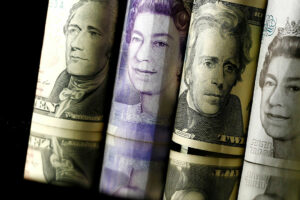
Hot money net inflows rise to $1B in September
FOREIGN PORTFOLIO INVESTMENTS registered a net inflow in September, marking the third straight month that more foreign capital entered the country than left, the Bangko Sentral ng Pilipinas (BSP) said on Thursday.
Transactions on short-term foreign investments registered with the BSP through authorized agent banks posted a net inflow of $1.03 billion in September, a turnaround from the $698.01-million net outflows in the same month a year ago.
Hot money inflows also nearly doubled (92.1%) from $533.95 million posted in August.
Foreign portfolio investments are commonly referred to as “hot money” due to the ease with which these flows enter or leave the country.
Data from the central bank showed that gross inflows surged by 185.2% to $2.53 billion in September from $887.61 million in the same month a year ago. Month on month, inflows soared by 84.7% from $1.37 billion.
More than half (57.5%) of inflows was invested in peso government securities, while the remainder went to Philippine Stock Exchange-listed securities involved in banks, holding firms, property, transportation services, and food, beverage, and tobacco.
The majority or 88.4% of investments for the month came from the United Kingdom, Singapore, the United States, Luxembourg and Malaysia.
On the other hand, gross outflows declined by 5% to $1.51 billion during the month from $1.59 billion a year prior. However, outflows surged by 80% in September from $836.78 million in August.
The central bank said that 51.1% of total outward remittances went to the United States, equivalent to $769.93 million.
For the first nine months of the year, BSP-registered foreign investments yielded a net inflow of $3.02 billion, significantly higher than the $387.24-million net inflow in the same period last year.
Rizal Commercial Banking Corp. Chief Economist Michael L. Ricafort said that the inflows were driven by the recent rate cuts by the central bank.
The central bank began its easing cycle in August with a 25-basis-point (bp) reduction, the first rate cut since November 2020.
It also delivered another 25-bp cut in October, which brought the target reverse repurchase (RRP) rate to 6%.
BSP Governor Eli M. Remolona, Jr. signaled the possibility of another 25-bp cut at the Monetary Board’s last meeting for the year on Dec. 19. If realized, this would bring the key rate to 5.75% by end-2024.
Mr. Ricafort also noted the positive impact of the recent reserve requirement ratio (RRR) reduction on markets.
“Policy rate cuts and RRR cuts are good for the financial markets especially for bond markets and stock markets; also good for the economy with lower borrowing costs that spur more demand for loans, investments and other business activities,” he said.
In September, the BSP announced its plans to reduce the RRR for universal and commercial banks and nonbank financial institutions with quasi-banking functions by 250 bps to 7% from 9.5%, effective on Oct. 25.
It also slashed the RRR for digital banks by 200 bps to 4%, while the ratio for thrift lenders was reduced by 100 bps to 1%. Rural and cooperative banks’ RRR was brought down by 100 bps to 0%.
The BSP expects foreign portfolio investments to yield a net inflow of $4.2 billion in 2024. — Luisa Maria Jacinta C. Jocson



